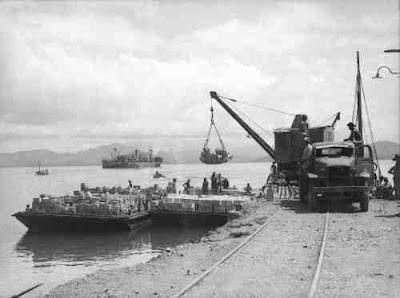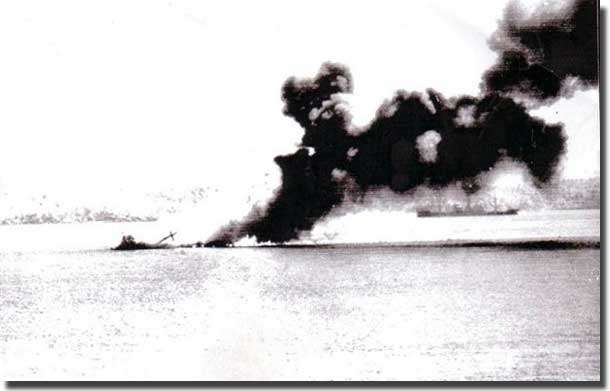Port Moresby's Colourful History
Port Moresby, the capital of Papua New Guinea, has a colourful history behind it, particularly during World War 11 when it saved Australia from being invaded by the Japanese.
Many of our young people also do not know of the pivotal role our capital city played in swaying the tide of WW11.
Long before the arrival of the white man, the Motuan people of the area now known as Port Moresby, traded their pots for sago, other food and canoe logs, with their partners from the Gulf of Papua.They sailed from Hanuabada and other villages, built on silts above the waters of the bay.They also intermarried with the Gulf people and created strong family and trade links.
The Hiri expeditions were large-scale.As many as 20 multi-hulled canoes or lakatoi, crewed by some 600 men, carried about 20,000 clay pots on each journey.To the Motuans, the Hiri was not only an economic enterprise but they also confirmed their identity as a tribe because of the long and dangerous voyages.These voyages are commemorated in modern times by the annual Hiri Moale Festival held at Ela Beach in September.
The area was already an important trade centre by the time Captain John Moresby, of HMS Basilisk, first identified the area of the site later to become known as Port Moresby.
The Englishman had just ventured through the Coral Sea at the eastern end of New Guinea and upon encountering three previously unknown islands landed there.
At 10 o’clock in the morning of the 20th February, 1873, he claimed the land for Britain and named it after his father, Admiral Sir Fairfax Moresby.He called the inner reach “Fairfax Harbour” and the other “Port Moresby”.
Actual European settlement of the site did not occur until a decade later when the south-eastern part of New Guinea island was annexed to British Empire. British New Guinea was passed to the newly established Commonwealth of Australia in 1906, and became known as Papua.
From then until 1941 Port Moresby grew slowly.The main growth was on the peninsula, where port facilities and other services were gradually improved.Electricity was introduced in 1925 and piped water supply was provided in 1941.
Before WWII, Port Moresby was a small administrative center for the Australian territories of Papua and New Guinea.
Japanese air raids against Port Moresby started on February 2, 1942, and continued until April 12, 1943 (plus later nighttime harassment raids).The area became a major American and Australian staging area and airfield complex in support of the Allied push to the north of New Guinea
On January 23, 1942, the Japanese landed at Kavieng on New Ireland and at Rabaul on New Britain where they quickly overcame the Australian defenders.On March 8, the Japanese established themselves firmly at Lae and Salamaua in Morobe.
However, the Battle of the Coral Sea from May 5 to 8 averted a Japanese sea borne invasion of Port Moresby and the American success at the Battle of Midway in June not only destroyed Japan’s capacity for undertaking long range offensives but also provided the Americans with the opportunity to move from the defensive to the offensive.
The Japanese, who were regularly bombing Port Moresby with twenty to thirty bombers with fighter escort, decided on the overland attack across the Owen Stanley Range.
It was on July 21, 1942, that Japanese troops landed on the northern coast of then New Guinea and unexpectedly began to march over the Owen Stanley Ranges with the intent of capturing Port Moresby.
On the Kododa Trail the Australian 7th Division resisted the Japanese General Horii’s overland attempt to capture Port Moresby, and the advance was halted within 30 miles of the city.
Had they succeeded, the mainland of Australia would have come under dire threat.
Kokoda was arguably Australia’s most significant campaign of the Second World War.
More Australians died in the seven months of fighting in Papua, and the Japanese came closer to Australia, than in any other campaign.
Many of those young Australians, whose average age was between 18 and 19, now lie buried at the Bomana War Cemetery outside Port Moresby.Port Moresby (Bomana) War Cemetery is about 19 kilometres north of Port Moresby on the road to Nine-Mile, and is approached from the main road by a short side road called Pilgrims Way.The cemetery contains 3,819 Commonwealth burials of the Second World War, 702 of them unidentified.
Port Moresby has grown considerably since the end of World War 11 and many traces of the war have been removed or disappeared, but airfields and dive sites still remain.
The city is home to the PNG National Museum with a collection of war relics and artifacts.
One of the best-known landmarks in the city is the wreck of the motor vessel Macdhui.The vessel, sunk in the harbour by Japanese bombs in 1942, is plainly visible on the reef near Tatana Island.
Numerous WW11 aircraft wrecks lie in shallow water around the coast or on the reefs near Port Moresby and can be viewed by diving.
Nearly the entire city has some connections with World War II. These include Port Moresby (Town) Prewar town and wharf area; Konedobu Northern area of the town; Kaevaga North of Konedobu ; Waigani former 5-Mile Wards Drome and the PNG goverment headquarters; Gordons South-east of Waigani PNG Modern History Museum; Boroko Located to the east of town ; Gerehu Area to the north of the present day University of PNG; Kila Kila East of Port Moresby town, former 3-Mile Drome; Mount Lawes Peak behind Port Moresby; Fairfax Harbor Port Moresby’s Harbor; Bootless Bay Inlet to the east of Port Moresby; Idlers Bay Inlet to the west of Port Moresby, Roku village; Joyce Bay Bay to the east of Port Moresby, Local Island
By 1944, Port Moresby had six airfields. Jackson was the largest, and was named after Australian ace pilot John Jackson, leader of RAAF Squadron 75, who was killed in a dogfight against Japanese planes over Port Moresby on April 28, 1942.
Wartime airfields in the area included the following: Kila Drome (3 Mile) Airfield for fighters and bombers; Ward Drome (5 Mile) Airfield for heavy bombers and transport planes; Jackson Airport (7 Mile) Main airfield still in use today by Air Nugini; Berry Drome (12 Mile) Fighter and medium bomber base near Bomana; Schwimmer (14 Mile) Fighter and medium bomber base; Durand Airstrip (17 Mile) Fighter and medium bomber base; Rogers (Rarona, 30 Mile) Fighter and medium bomber base; Fisherman’s (Daugo) Emergency landing strip on off shore island
There are a number of abandoned gun emplacements, bunkers and fortifications.
These were constructed by Australian Engineers in 1944, but never used, then abandoned after the war: Basalisk Battery Largest, three gun battery to the west of Moresby; Paga Hill Battery Gun battery and radar set location hill outside Moresby; Gemo Island Battery Gun position on offshore island, overlooking the east; Bootless Bay Battery Gun position at Bootless Bay; Boera Battery Gun position west of Port Moresby.
Source: The National Online
Labels: history, Port Moresby









